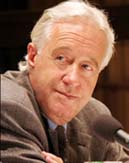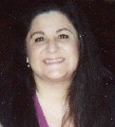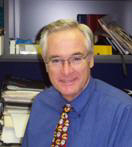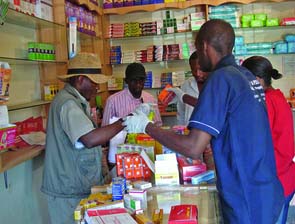Member Login
E-mail: ISTM@ISTM.org
Office hours: Monday - Friday, 9.00 - 17.00 EDT (UTC-04)
July/August 2010

Journal of Travel Medicine (JTM) Improves its Impact Factor - again

Robert Steffen
The impact factor is one of many quantitative tools for evaluating journals. It measures the frequency with which the "average article" in a journal has been cited in other journals over a given period of time. Many authors prefer to publish in journals with high impact factors because their promotions committees value this index. Our editor-in-chief, staff, publisher and Publications Committee are devoted to making JTM as competitive as it can be. We encourage authors to continue to use JTM as their vehicle for publishing travel medicine articles, not only because JTM has a competitive impact factor but because the ISTM member readership is most likely to value and implement the results and conclusions-which arguably is the best impact of all.
ISTM Appoints an Executive Director

Diane Nickolson
The addition of an experienced executive director to complement the present able staff of the ISTM secretariat was made necessary by a host of conditions: the robust growth of the Society (membership has surpassed 2500 members), the ever more challenging, ever more rapidly changing financial issues that face an international Society during uncertain economic times, and the increasing number of programs being offered and being planned. Diane will supervise the staff that brought ISTM from its infancy a mere twenty some years ago to its present state of solid maturity and its position as a Society widely admired by other similar organizations.
Diane will work closely with the Executive Board to develop an integrated business strategy that includes membership growth, a more robust certification and recertification process, and a unified approach to integrate meetings, courses, journal, certification, and website.
Diane brings to ISTM 25 years of experience in numerous areas that are closely aligned with the needs of our Society. Her most recent position was with the American Regulatory Boards of Optometry where she was Executive Director. Prior to that position she served as Associate Director of Continuing Legal Education for the American Bar Association, Vice President for Operations for an international for-profit medical education company, and Deputy Executive Director of the International Psychogeriatric Association (IPA). The IPA is a society much like ours with a multi-continent, multi-cultural Board and with meetings and activities throughout the world. IPA members include physicians, nurses, social workers, psychologists, and others.
Diane's experience and talent will help elevate the ISTM to a higher level and enable us to provide services and value for members and to support and counsel our committees, interest groups, and professional groups. A more involved membership is vital for both membership retention and membership expansion.
When asked about her vision for the ISTM, Diane replied, "It's an exciting time to be here. In the past 20 years, ISTM has grown into a very successful organization providing the travel medicine community with wonderful opportunities to learn, share and communicate. I'd like to continue this trend, and help move the organization forward with new programs, products and services to increase our impact on the community. Travel medicine is a growing field. The ISTM has an amazing opportunity to help expand that growth and make a positive impact on healthcare providers around the world, as well as help to protect and treat travelers. I'd like to help increase the reach not only to travel medicine providers, but to those who counsel and service travelers, as well as the travelers themselves."
Her early impression of the ISTM? "I was fortunate to have my first dealings with ISTM concerning the development of the new website last autumn. My first impressions have remained ... ISTM is an organization filled with bright, caring, and passionate people who have a shared interest in promoting safe and healthy travel, and love to travel themselves!"
Diane has joined Brenda, our administrative director, in our new larger and more centrally located office in the Atlanta area.
Who is Diane Nickolson? She entered the world in Chicago, born into a fairly traditional Greek family, and spent most of her early childhood in a Greek neighborhood, surrounded by her immediate and extended family, very similar to being in a small Greek village. She spoke little English until she started school. "Our neighborhood was somewhat insulated by main streets, and the surrounding neighborhoods were also ethnic. Looking back, it was fairly sheltered and safe, though in the outskirts of a big city. Within three blocks of our home lived all my grandparents, aunts, uncles and cousins. The central point of the Greek community, of course, was the church, and we were typically there five to six days each week for services as well as for other activities. It was a very safe, loving and sheltered environment. Growing up it was important to our family that we retained the culture and language, and remained close to our family."
What made her choose her profession? "Actually, I kind of fell into it. I was always focused on education. Our family valued education and educators, and early in my career I was focused on adult education. One of my first professional positions was with a legal consulting company, where we focused on internal training activities. From there, I was offered a position at the American Bar Association in continuing legal education, and moved into the membership-driven not-for-profit world. My beginnings in membership societies began with a focus in continuous professional learning and development, and I've retained that specialty through the years. I left the American Bar Association after 14 years, and moved into the healthcare community."
She spends her spare time, what there is of it, reading and cooking. "I've always been an avid reader, and spend many hours reading about different cultures, historical novels, self-help books, as well as business and industry publications. I also read cookbooks like novels - odd, yes? I do love to cook, though I'm not the best baker. I think it's the need to be exact in measurements that throw me off when baking; cooking is much more creative for me and I experiment a great deal. Sometimes my experiments work, sometimes not. But cooking is a pleasure; many consider it one of my passions. We always had restaurants in the family, and I had wonderful cooks always around to learn from.
"I am also interested in studying other cultures. One good friend I traveled to many countries with said I should have been an anthropologist. He's probably right, for when travelling I love to spend time learning about the environment and how it impacted the lives of the people who lived there - how people used to live, what they did, what they ate and how that led to how people live there today. It's also fascinating to me how language reflects how we live and what our culture considers important. While I'm not fluent in many languages, when I learn about a culture, I try to learn key phrases to help gain a better understanding of the people.
"I also love to sail. (What Greek doesn't?) We live in an area with many lakes, and spend a lot of time on the water.
"Now I live in the Atlanta area with Robert, and also with our border-collie mix dog, Amelia. Often one or both of Robert's teenage children stay with us. We see both of our families frequently; his parents, siblings and their families are all in this area, though mine are spread out."
Eric Walker Receives Queens' Honour

Eric Walker
Eric has been a pioneer and one of the leading lights in the field of travel medicine for over 20 years. He worked as a consultant epidemiologist in travel medicine at HPS (Health Protection, Scotland) from 1988 until his retirement in 2006. Prior to this he was a consultant physician in Infection and Tropical Diseases in Glasgow, a clinical role he continued throughout his time at HPS.
Eric's passion has mainly been in the development of travel health services, not only in Scotland, but more widely across the UK and internationally. In the 1980's he set up one of the first telephone help lines for health care professionals advising those travelling abroad. This was then expanded with the establishment of TRAVAX (Scotland), a comprehensive and interactive, evidence-based resource for health care professionals advising travelers. Originally developed for Scotland, this database is now widely used throughout the UK. A companion database, the FitforTravel website, for use by the general public followed. These resources will serve as a lasting legacy of Eric's vision and dedication in the provision of travel health advice.
Eric has always been concerned with raising standards in clinical practice and amongst his other notable achievements are those in the area of training and education. He was instrumental in developing the first International Diploma and MSc in Travel Medicine, courses which have affectionately become known as ‘the Glasgow courses.'
Following his retirement from HPS, Eric continued to practice part-time as a GP and further developed his travel medicine work with the establishment of the Faculty of Travel Medicine at the Royal College of Physicians and Surgeons Glasgow (RCPSG), where he was appointed the first Dean of the Faculty. He was also president of the British Travel Health Association and continues to sit on various national committees and panels, giving wise comment and counsel on matters of travel medicine significance.
Editor's personal note: I hope that this is not presumptuous, politically incorrect or impudent on my part. The Queen made an excellent choice in choosing Eric for this great honor. Indeed, if you look up "gentleman" in the dictionary there should be a picture of Eric. He defines every meaning of the word. He is intelligent, courteous, considerate, kind, and soft-spoken. I am greatly honored in being able to call him a friend. K.N, Editor.
ISTM News
Publications Committee

Charles Ericsson
It is clear that Robert Steffen will leave a healthy journal to his successor. We are extremely happy to report that the JTM impact factor has risen to 1.503. Kudos to Robert, Gaby, Wiley and the whole team!
Respectfully submitted,
Charles D. Ericsson, MD
Chair, ISTM Publications Committee
Charles.D.Ericsson@uth.tmc.edu
Pediatric Interest Group
A group of ISTM members are in the process of forming a pediatric interest group within the ISTM. The initial email announcement posted on listserv resulted in 40 members from 13 countries joining. The countries represented are: Australia, Austria, Brazil, Canada, France, Germany, Ireland, Israel, Japan, Spain, Venezuela, United Kingdom, and the United States. This is an excellent start.
The Group held its first telephone conference call on June 16th. Members have submitted numerous suggestions for goals for the group. Karl Neumann was selected as the interim chairman. At his request he will serve only until a permanent chairman and other officers are chosen in the next few months.
You need not be a pediatrician to join. Pediatrics is an integral part of travel medicine and every travel medicine practitioner is asked questions about traveling with children. Founding members represent a cross-section of the ISTM membership.
The ISTM encourages members to form common professional and interest groups to further both travel medicine in general and common interests in particular. Other groups already in existence or in the process of being formed include Nursing, Pharmacy, Psychological Healthy, Destinations Communities Support, and Migrants and Refugee Health. For more information about the groups, contact Brenda at admindir@istm.org.
Growing Threat from Counterfeit Medicines Worldwide
Bulletin of the World Health Organization
(This is a follow up article concerning counterfeiting medications)

More than 260 premises were visited during IMPACT’s Operation Zambezi in November 2009.
In 2009, 20 million pills, bottles and sachets of counterfeit and illegal medicines were seized in a five-month operation coordinated by the International Criminal Police Organization (Interpol) across China and seven of its south-east Asian neighbours; 33 people were arrested and 100 retail outlets closed.
Also last year, a series of raids in Egypt found counterfeit medicines worth hundreds of millions of dollars and exposed a criminal network feeding consumers across the Middle East. And in Europe, customs officers seized 34 million counterfeit pills in just two months in 2009, a haul that the European Union's industry commissioner Guenter Verheugen said "exceeded our worst fears".
More than 260 premises were visited during IMPACT's Operation Zambezi in November 2009.
Results from this string of law enforcement operations around the world are slowly building a profile of the trade that shocks even regulators familiar with the issue. Health experts believe such operations have only scratched the surface of a flourishing industry in counterfeit medicines that poses a growing threat to public health around the world.
Asia accounts for the biggest share of the trade in counterfeit medicines, according to the industry-funded organization, the Pharmaceutical Security Institute. But, according to Interpol officer Aline Plançon, there are counterfeit medicine cases in every part of the world. "There is a flow of products coming from everywhere and going to everywhere, there are so many hubs," she says.
The threat from counterfeit pharmaceutical products is hardly new; many national authorities have long waged their own struggle against counterfeit medicines. Although WHO has been working actively on this complex, politically sensitive issue since it was first discussed in May 1998 at the World Health Assembly, enforcement efforts stepped up a notch in 2006 when it launched the International Medical Products Anti-Counterfeiting Task Force (IMPACT), drawing members from international organizations, enforcement agencies, industry and nongovernmental organizations.
Since then, IMPACT members have been collaborating closely on international criminal investigations, assisting countries in strengthening their own detection and enforcement systems, and working with industry to develop such measures as secure, high-tech pharmaceuticals packaging.
Worldwide sales of counterfeit medicines could top US$ 75 billion this year, a 90% rise in five years, according to an estimate published by the Center for Medicine in the Public Interest in the United States of America (USA). It is difficult to measure the extent of the problem when there are so many sources of information and different definitions of "counterfeit". Sabine Kopp, IMPACT's interim executive secretary and manager of WHO's anti-counterfeiting programme, says that WHO is currently conducting a survey to compare legislation and terminology used to combat counterfeiting of medical products in different countries.

"Studies really only give a snapshot of the situation as counterfeiters are extremely flexible in the way they mimic products and avoid detection," says Kopp.
There are no accurate data that accurately measure the scale of this vast, sophisticated and lucrative business, but "we're talking about big quantities seized and sophisticated criminal networks," says Interpol's Plançon, who co-chairs IMPACT's working group on enforcement.
The range of counterfeit products reaching markets has also broadened with the increased commercial use of the Internet to provide a dizzying array of both branded and generic drugs. In more than 50% of cases, medicines purchased over the Internet from illegal sites that conceal their physical address have been found to be counterfeit, according to WHO.
"In a shocking development, it was discovered relatively recently that counterfeit versions of lifesaving prescription medicines for cancer and serious cardiovascular diseases are also being sold to consumers online," the European Alliance for Access to Safe Medicines reports.
Developing countries are an obvious target for counterfeiters, because the cost of legitimate drugs may be beyond the reach of much of the population and legal controls are often weak, analysts say.
In "Operation Storm 2", the IMPACT-coordinated operation in Asia in 2009, the counterfeits seized ranged from antibiotics to birth-control medicines, anti-tetanus serums, antimalarials and drugs treating erectile dysfunction. In Egypt, investigators found everything from organ transplant drugs to medicines for illnesses such as heart diseases, schizophrenia and diabetes along with thousands of boxes of cancer drugs, Plançon says.
Even though higher-income countries have stringent regulations and better law enforcement, they also offer great rewards. According to the Medicines and Health care products Regulatory Agency in the United Kingdom, counterfeiters now also target the most lucrative markets, copying high-value, high-turnover, high-demand drugs. "Counterfeiting is primarily motivated by its potentially huge profits," says Kopp. "Criminals are adept at quickly adjusting to where the most money can be made."
A Pfizer-sponsored study, one of the largest investigations conducted in 14 European countries, estimated that western Europeans spend more than US$ 14 billion a year on illicitly-sourced drugs, many of them counterfeit. A big share of the market constitutes the so-called "lifestyle" drugs. The study found that almost half the counterfeit drugs sold on the Internet were for weight loss, followed by influenza medicines. Another key market for counterfeits in Europe, as in Asia, is erectile dysfunction, nourished by the growth in online pharmacies that offer access to prescription-only medicines without the embarrassment of consulting a doctor. A Dutch study cited by the International Journal of Clinical Practice found that, of 370 seized Viagra samples, only 10 were genuine.
In Singapore, 150 people were admitted to hospital in the first five months of 2008 having severe hypoglycaemia. Four of them died and seven suffered severe brain damage. They had reportedly taken counterfeit copies of drugs purporting to treat erectile dysfunction but which contained a hefty dose of glyburide, used for treating diabetes.
The overall death toll attributable to counterfeit medicines, like the scale of the business, is unknown but the costs to public health are huge. Quite apart from the direct impact on individuals, counterfeits can cause resistance to medicines for tackling diseases that are leading causes of mortality. Malaria, which kills around a million people a year, is a prime example.
An unprecedented international collaboration and investigation of counterfeit antimalarials found that half of the 391 samples collected contained no active ingredient (artesunate) or too little to have any benefit. Manufacturers' holograms provided no guarantee of protection as investigators found the counterfeiters had developed their own sophisticated fake holograms. The results of the investigation, published in PLoS Medicine in 2008, concluded that the "epidemic" of counterfeits in south-east Asia had led to "deaths from untreated malaria, reduced confidence in this vital drug, large economic losses for the legitimate manufacturers and concerns that artemisinin resistance might be engendered."
"People don't necessarily find out that the drugs they were taking were counterfeit. Even a single case of a counterfeit medicine is unacceptable since it indicates a weakness in the pharmaceutical supply system and undermines the credibility of health systems," says Kopp.
The scale and ingenuity of the trade in counterfeits poses a formidable challenge to enforcement. Moreover, international trade presents easy opportunities for counterfeiters to insert their products into the supply chain of legitimate pharmaceuticals and to disguise the source. "Even in hospitals, we have seen deliveries where counterfeit medicines have been added to genuine batches of medicines," says Kopp. "The counterfeiters simply falsify the delivery papers by adding an extra zero to the quantity supplied, then they make up the difference by adding their own boxes to the order."
Since 2008, IMPACT and Interpol have mounted operations tackling counterfeiting in east Africa and Asia and have been working with governments in developed countries against the Internet trade in counterfeit medicines. The operations are building up a better understanding of who they are up against, says Plançon. "So far we can say we are disrupting some networks," she adds. "It's difficult to say we have fully dismantled them, but they have been harmed for sure."
Destroying networks is only one of the aims. At this early stage IMPACT's other objectives are to build public and government awareness as well as cooperation between stakeholders and national enforcement agencies. Transnational cooperation is essential to tackle sophisticated, transnational criminal networks involved in counterfeiting, Plançon says.
There too, IMPACT sees positive results. In the aftermath of two "Storm" operations in south-east Asia, IMPACT wants to foster cooperation in intelligence exchanges and training. The first IMPACT/Interpol-coordinated operation in 2008 targeting Internet sites trading illicit or counterfeit medicines had participation from eight countries. The second operation in 2009 involved 25 countries, including Australia, Canada, Israel, New Zealand, Singapore, South Africa, Thailand, USA and 16 European countries. It identified more than 1200 web sites engaged in illegal activity, closed 153 sites and made 12 arrests, according to Interpol.
Still, health experts and IMPACT say enforcement remains severely handicapped by weak laws and regulations for tackling counterfeiters. "Obstacles to effective action include the lack of a clear worldwide consensus on what constitutes a counterfeit drug and the fact that activities that are illegal in one country may be legal in another," Graham Jackson, editor of the International Journal of Clinical Practice, commented in January.
Six years ago the International Conference of Drug Regulatory Authorities asked WHO to draft an international convention, but it has been a difficult process. No consensus has yet been reached on the text of the convention, and some governments remain opposed to the proposal. Measures to strengthen the legal framework for enforcement continue to be discussed. Plans to raise the issue at the World Health Assembly in May 2009 were pre-empted by the H1N1 influenza pandemic and were taken up again at the May 2010 Assembly.
